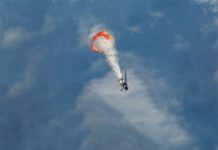Paint work is a big investment, with sizeable downtime and disassembly—and plenty of opportunity for buyer’s remorse. Doesn’t it make sense to plan every last detail of the paint scheme before pulling the trigger on the project?
Surprisingly it doesn’t always happen that way, and plenty of aircraft owners are left with good paint jobs but lousy airplane paint schemes. It’s not getting any easier. The automotive world is trickling new paint design trends into the aircraft world. You’ve seen them or own one—matte and semi-gloss schemes—plus bold color combinations that may or may not be in style a few years from now.
In this article will help tame the daunting task of designing the most modern airplane paint schemes the first time.
OEMs BOOST CREATIVITY
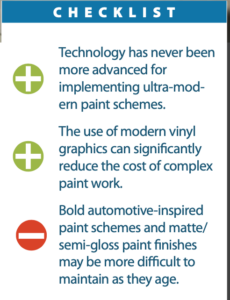
Manufacturers are no longer treating the presentation of their aircraft as a simple commodity, with the airplane paint scheme design as an afterthought, and an area to cut costs. Instead, they spend much more effort understanding their clients’ stylistic sensitivities, taking cues from the other industries, like high-end automobiles and fashion. The result is new and vogue design approaches yielding attractive and interesting designs that go a long way to attracting their customers’ attention. If you haven’t noticed, manufacturers like Cirrus, Daher, Pilatus and Diamond have worked hard to create designs that are edgier, more modern and far more interesting than they have in the past. They have also led a strong movement away from the typical white base color. Bold colors, unusual color combinations and more aggressive styling have emerged that leans more towards a Lamborghini feel than a family SUV.
“We’re seeing a definite trend of designs that move away from white base coloring,” Julie Voisin told us. As the Global Marketing Manager at the Sherwin-Williams Aerospace Coating division, she has her finger on the pulse of paint trends for pistons up through high-end biz jets. According to Voisin, there’s been a growing trend among buyers to match the paint scheme of their aircraft with the ones on their personal high-end vehicles.
All of these trends have given license to owners that are refurbishing their aircraft to be more free thinking. Designs that in the past would have not been considered because they would make it more difficult to sell their aircraft, are now eagerly implemented because they turn heads, and in the end, make it easier to sell their aircraft. On the other hand, go too bold and it could hinder the ability to sell it for the price you expect. Beauty is in the eye of the beholder.
BASE COLOR EVOLUTION
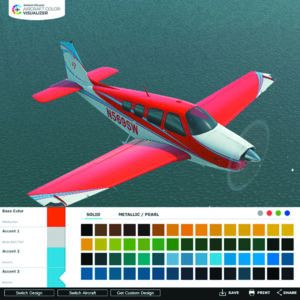
Still, any quote from a typical paint shop starts with Matterhorn White and two stripe colors. However, more and more owners are moving to other base colors. The most common variation is the use of metallic or pearl silvers and pearl whites in place of the typical white base. In the past few years, owners have taken it further, choosing reds, pearl yellows, golds, metallic charcoals, greens and other bold colors being used as the base color of the aircraft. Without a doubt, these aircraft pop on any ramp amongst the sea of white aircraft.
There have been changes in paint tech, too. The development of SHR (Special Heat Resistant) paints have made it much more acceptable to apply darker colors to the top of the aircraft. These paints transmit less heat through the skin, reducing the negative effects of increased cabin temperatures when parked on the ramp.
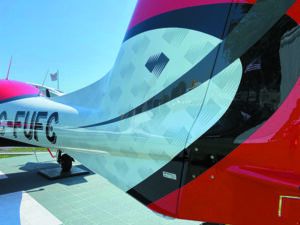
This has also allowed bold colors to be used on composite aircrafts (like a Cirrus or Diamond, to name two) without the risk of reaching the critical airframe temperature limits. The result is that now more owners than ever are applying bold colors to the top surfaces of their aircraft, which was in the past frowned upon. To many, this color blending simply makes for a better-looking aircraft.
Aerospace paint manufacturers have significantly evolved their chemistry and standard colors. Properly applied, newer paint systems will retain their color integrity and new finish for longer.
Gone are the days when a major concern of many colors—like reds—was just how quickly they will fade and become dry and pasty. The largest paint manufacturer to the general aviation industry, Sherwin-Williams Aerospace Coatings, is a good example of how scientific evolution in paint chemistry has yielded a wide array of innovative and interesting colors, including the SHR paints used by Cirrus. They provide for durable, long-lasting finishes.
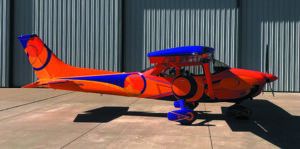
Most interesting are the advancement incorporated into the Sherwin-Williams SKYscapes base/clear colors. We are seeing shades of colors that are far more intense than ever before, like redder reds and richer blues, and deeper, more interesting glossy finishes.
When choosing a metallic or pearl color these days, it is not a matter of simply picking the shade you like. Colors have to be studied from all angles and in a variety of lights, as new pearl/metallic effects create finishes that drastically change color depending on viewing angles and ambient lighting. Ultimately, the colors yield more interesting finishes, and sometimes their color variability surprise owners when looking at the aircraft in different environments.
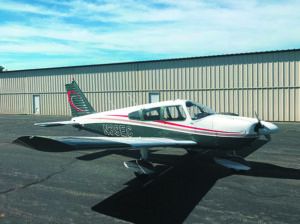
And that’s something you should consider when planning any airplane paint job. We recall one owner who didn’t realize his new paint looked different in low lighting. When he retrieved the aircraft from an avionics shop shortly after having it painted, he was convinced the shop had the airplane repainted without telling him, as to hide damage. What looked shiny and bright in direct sun looked orange peel-like in low light.
Another owner picked two shades of silver for the top and bottom of her plane—one slightly darker than the other. When she picked up the aircraft, she thought the paint shop had painted them backwards, as the dark silver looked lighter than the light silver.
With the effects of light and viewing angle, she does not know day to day if her aircraft will have dark silver on top and light silver on the bottom, or vice versa.
In general, buyers are enjoying the new colors, and aircraft paint shops tell us that the majority of its clients are implementing new, more interesting pearl and metallic colors in their designs.
FINISHES
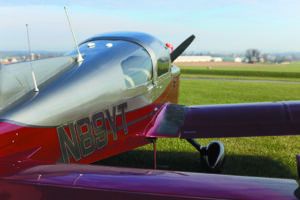
Matte paints have always been problematic on an aircraft. Fingerprints and stains from oil and fuel, and exhaust residue quickly mar a matte finish. Matte aircraft are also notoriously challenging to clean. However, following trends from the automobile industry, more and more aircraft owners have been drawn to implementing matte elements in their design, or an overall matte finish over the entire aircraft. Aerospace paint manufacturers have responded by developing clearcoats for matte and semi-gloss finishes that protect the finish from fingerprints, oil and soot, and that are much easier to keep clean. But they aren’t necessarily easy to maintain as the finish wears, compared to gloss finishes.
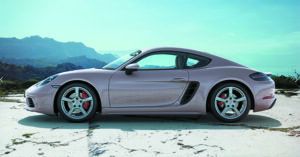
“You can put a buffer with compound to a glossy paint job and make it look good again as areas wear and fade. You won’t be able to do that with a semi-gloss or matte finish because you don’t want it to buff out glossy,” Voisin from Sherwin-Williams told us.
She said the tech support team has developed new techniques and tricks to better care for these new finishes, but you should still consider long-term upkeep with any matte or semi-gloss finish.
Still, more and more owners are implementing designs that include matte and eggshell finishes. It is now common to see a matte black spinner on a new aircraft in place of the more typical polished aluminum aircraft, a trend that owners are emulating when repainting their entire aircraft. Still, don’t underestimate the cost of the project, from planning to finish. Our surveys reflect typical prices from $15,000 to north of $100,000.
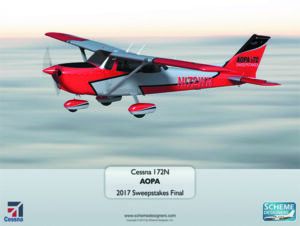
Another interesting trend is the use of multiple finishes of the same color (like a matte and a gloss black) to create subtle patterns in a airplane paint scheme design, or watermark effects. As an example, one can do an overall dark gray gloss base color with the same color dark matte gray for the stripe design. We’ve seen lots of projects in the past few years where logos are applied in matte paint or vinyl, keeping them subtle, but present.
MIXED MEDIA
More owners are using vinyl elements as a part of a paint scheme design. There is a wide array of vinyl available that emulates complex finishes, like carbon fiber or digital camouflage. These types of finished are expensive, complex and difficult to emulate in paint. But vinyl allows one to cost effectively and easily introduce these interesting finished into a paint scheme design, adding significant interest to the overall look of the aircraft.
Wraps are also a trend that is becoming more common in general aviation. As vinyl materials have evolved, they have become easier to install and more resistant to fading and cracking over time. The complex shape of an aircraft makes it much harder to wrap than a vehicle, and it takes a highly skilled vinyl installer to wrap a large part of an airframe. But done right, it allows an owner to be highly creative, use lots of colors, fades and other complex graphic design elements, without breaking the bank.
At the end of the day, it can also be removed and replaced with a new design for much less money than repainting an aircraft.
COMPLEX AND 3D DESIGNS
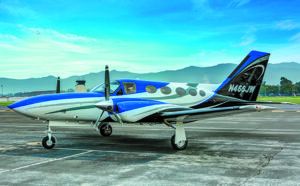
When developing a highly complex design, the limiting factors are frequently the cost and skill to lay it out on the aircraft. A typical airplane paint scheme takes a day or two to lay out. A very complex scheme may take many more days or a week to layout, significantly raising the cost of a paint job.
However, the use of full paint scheme precut vinyl masks has provided an affordable way to quickly layout a complex paint scheme. In some cases, paint masks can save between 50 percent and 80 percent of the time to layout a complex scheme, easily justifying the cost of the masks. Moreover, improved computer-aided paint scheme design techniques mean that the files to create paint masks are readily available, simplifying the masks creation process immensely.
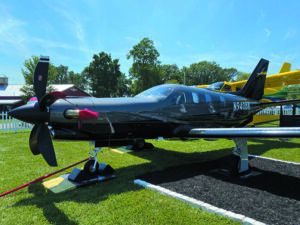
As a result, owners are not as reticent to include complex design elements in their paint scheme designs, allowing for more interesting and unique designs.
Most paint scheme designs are accomplished in 2D using a side and top view drawing of the aircraft. 3D design technology has brought a new level of realism to paint scheme design, and more owners are opting to have their airplane paint schemes designed using 3D photorealist models that allow them to view their new paint schemes from any angle, providing a much more realistic view of how their aircraft will really look after it is painted. This is particularly useful in understanding how paint schemes flow through the complex shapes on an aircraft, such as from the side of the fuselage to the tail.
Fading design elements, like checks (or stripes) that fade from one color to another, are now far more commonly used in designs, Plus, more and more paint shops have the skills to implement these interesting design elements.
Owners are making use of these application techniques more often, creating unique design elements that attract attention, and making the plane look younger than it is.
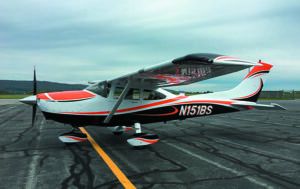
When I painted my Cessna 150 in the 1980s, it was heavy colors that swept up the tail from the fuselage. In the 1990s, it was laser stripes with a lower split base, most commonly used by Piper and Mooney, and that is how I repainted my Cessna Cardinal RG. The millennium brough more fluid schemes that emulated airflow, designed to make an aircraft look like it is moving while parked on the ramp—and that is also how I painted my Cherokee 180. Over the last decade, styles have evolved yet again, ranging from edgy aggressive styles to much greater use of bolder colors, yielding more dramatic schemes that turn heads wherever you roam.
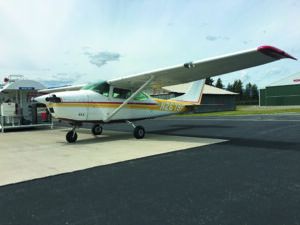
Paint scheme styles have commonly been driven by the creativity of general aviation manufacturer paint schemes and color palettes. During the heydays of aircraft production in the late 1970s, when new aircraft were being manufactured at much higher rates that we see today, it was easy to tell the age of an aircraft just by looking at the paint scheme. And those few older aircraft that got repainted were commonly painted in whatever their particular manufacturer was doing at that moment.
Now, with the average age of the fleet over 50 years old, and many common aircraft long out of production, and with manufacturers producing only a small number of aircraft annually, paint schemes are less influenced by your aircraft manufacturer’s latest design. Additionally, many manufacturers have moved away from creating new paint schemes annually. This has led owners to get creative and more willing to express their personal style when repainting their aircraft. This environment has made paint scheme design more interesting and creative. As a paint scheme design specialist who has been professionally designing paint schemes for 25 years, it is an exciting time to participate in evolving aircraft paint scheme design trends.
—Craig Barnett
BE CREATIVE
Improved materials, skills and tools have allowed significantly more creativity in paint scheme design. Styles and colors continue to evolve. Some trends are long lasting (curvy elegant schemes have been in style for 25 years and show signs of continued popularity). Other trends are short-lived (ribbon designs were popular for five years or so). Some colors never go out of fashion (like blues, silvers, golds, blacks and reds). Others are cyclical (like greens, browns and purples). It is still important to consider colors and design in the context of longevity. Will you enjoy the design 10 years from now? Will the colors and style be marketable five years from now? It is equally important to create a design that you find exciting, that makes you smile when you open the hangar.
There are plenty of resources to help you plan your next airplane paint scheme, and many are available at better paint shops (the results of the paint shop satisfaction survey in the Aug. 2020 issue of Aviation Consumer is worth a read.) Do your homework first. Sherwin-Williams Aerospace Coatings just launched a free interactive paint design planning utility where you can experiment with various colors and different views of the aircraft.
It’s an exciting time. An increasing percentage of aircraft owners are moving away from the more mundane designs and colors and developing unique and interesting designs that really speak to their personalities. Now that is a trend we can all get behind.
See a video on paint scheme designs at http://tinyurl.com/j95ht2a.



